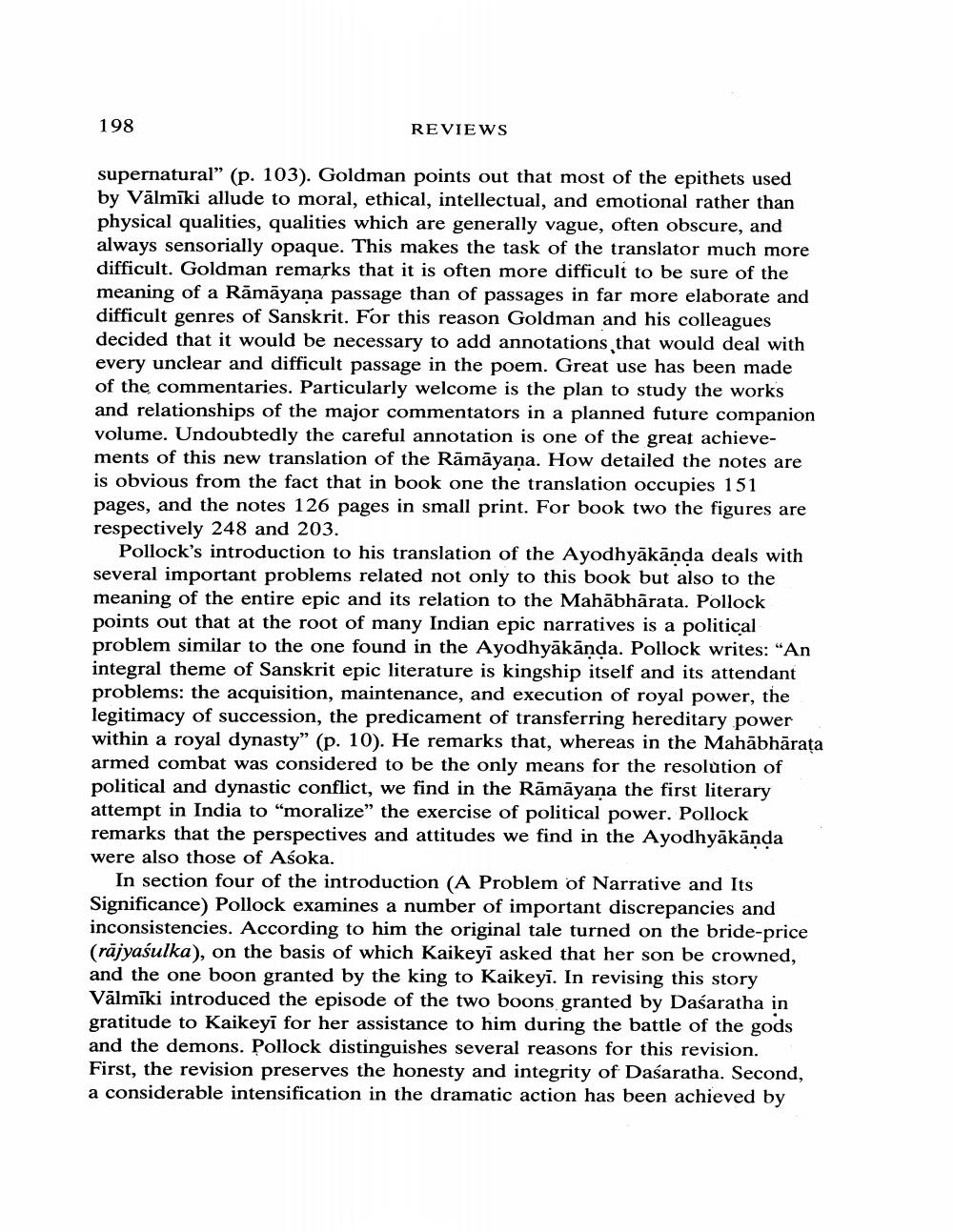Book Title: Reviews Of Diffeent Books Author(s): J W De Jong Publisher: J W De Jong View full book textPage 4
________________ 198 REVIEWS supernatural” (p. 103). Goldman points out that most of the epithets used by Vālmīki allude to moral, ethical, intellectual, and emotional rather than physical qualities, qualities which are generally vague, often obscure, and always sensorially opaque. This makes the task of the translator much more difficult. Goldman remarks that it is often more difficult to be sure of the meaning of a Rāmāyana passage than of passages in far more elaborate and difficult genres of Sanskrit. For this reason Goldman and his colleagues decided that it would be necessary to add annotations that would deal with every unclear and difficult passage in the poem. Great use has been made of the commentaries. Particularly welcome is the plan to study the works and relationships of the major commentators in a planned future companion volume. Undoubtedly the careful annotation is one of the great achievements of this new translation of the Rāmāyana. How detailed the notes are is obvious from the fact that in book one the translation occupies 151 pages, and the notes 126 pages in small print. For book two the figures are respectively 248 and 203. Pollock's introduction to his translation of the Ayodhyākānda deals with several important problems related not only to this book but also to the meaning of the entire epic and its relation to the Mahābhārata. Pollock points out that at the root of many Indian epic narratives is a political problem similar to the one found in the Ayodhyākānda. Pollock writes: "An integral theme of Sanskrit epic literature is kingship itself and its attendant problems: the acquisition, maintenance, and execution of royal power, the legitimacy of succession, the predicament of transferring hereditary power within a royal dynasty" (p. 10). He remarks that, whereas in the Mahābhārata armed combat was considered to be the only means for the resolution of political and dynastic conflict, we find in the Rāmāyana the first literary attempt in India to “moralize” the exercise of political power. Pollock remarks that the perspectives and attitudes we find in the Ayodhyākānda were also those of Asoka. In section four of the introduction (A Problem of Narrative and Its Significance) Pollock examines a number of important discrepancies and inconsistencies. According to him the original tale turned on the bride-price (rājyaśulka), on the basis of which Kaikeyi asked that her son be crowned, and the one boon granted by the king to Kaikeyi. In revising this story Vālmīki introduced the episode of the two boons granted by Dasaratha in gratitude to Kaikeyi for her assistance to him during the battle of the gods and the demons. Pollock distinguishes several reasons for this revision. First, the revision preserves the honesty and integrity of Daśaratha. Second, a considerable intensification in the dramatic action has been achieved byPage Navigation
1 2 3 4 5 6 7 8 9 10 11 12 13 14 15 16 17 18 19 20 21 22 23 24 25 26 27 28 29 30 31 32 33 34 35 36 37 38 39 40 41 42 ... 60
